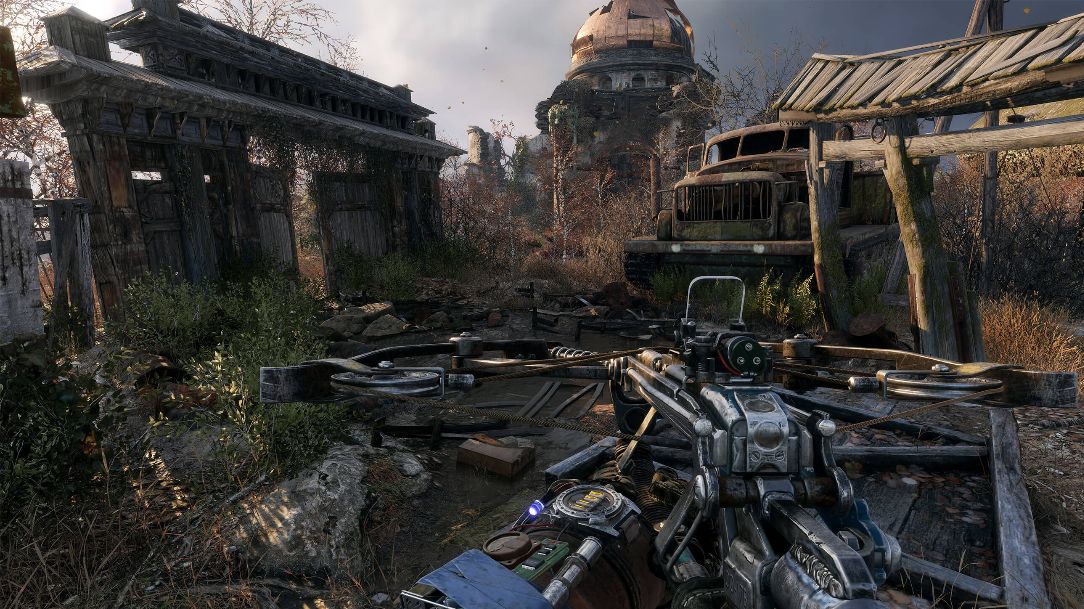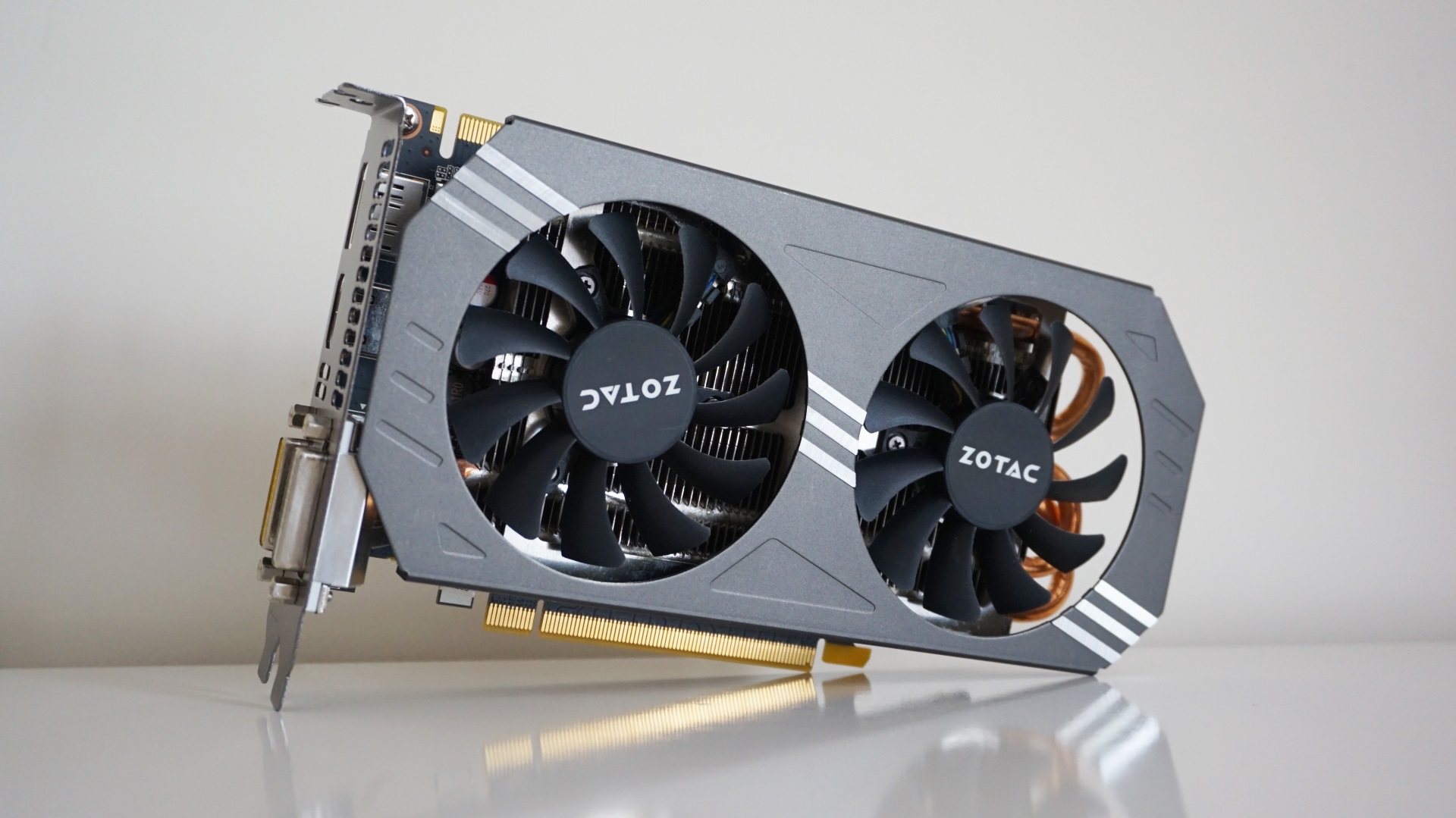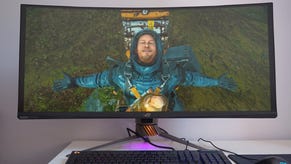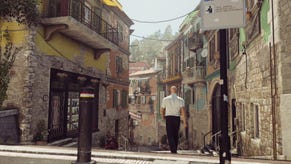Metro Exodus PC graphics performance: how to get the best settings
Our exodus into the graphics performance apocalypse
The first of Metro Exodus' two DLC expansions arrives on PC today, so I thought it was high time to revisit my jumbo graphics performance test to tell you how to get the best settings on even more of today's best graphics cards. After all, there have been several new Nvidia RTX and AMD Navi cards released since Metro Exodus came out in February, so regardless of whether you're starting the game for the first time or jumping back in for a bit of Two Colonels action, here's how to get Metro Exodus running at a smooth 60fps.
Metro Exodus PC requirements
But first, some PC requirements. Given the sheer brute force required to run Metro Exodus, 4A Games have been very particular about what kind of PC system you'll need to get the game running smoothly across a variety of resolutions and frame rates. Their minimum specification, for instance, is intended for 1920x1080 play at 30fps, while their Extreme spec is for 4K at 60fps. Here's a reminder of what they all are:
Minimum specs (1080p 30fps):
OS: Windows 7-10 64-bit
Processor: Intel Core i5-4400
RAM: 8GB
Graphics: Nvidia GeForce 670 / Nvidia GeForce GTX 1050 / AMD Radeon HD 7870
Video memory: 2GB
DirectX: 11 / 12
Recommended specs (1080p 60fps):
OS: Windows 10 64-bit
Processor: Intel Core i7-4770K
RAM: 8GB
Graphics: Nvidia GeForce GTX 1070 / Nvidia GeForce RTX 2060 / AMD Radeon RX Vega 56
Video memory: 8GB
DirectX: 12
High specs (1440p 60fps):
OS: Windows 10 64-bit
Processor: Intel Core i7-8700K
RAM: 16GB
Graphics: Nvidia GeForce GTX 1080 Ti / Nvidia GeForce RTX 2070 / AMD Radeon RX Vega 64
Video memory: 8GB
DirectX: 12
Extreme specs (4K 60fps):
OS: Windows 10 64-bit
Processor: Intel Core i9-9900K
RAM: 16GB
Graphics: Nvidia GeForce RTX 2080 Ti
Video memory: 11GB
DirectX: 12
As mentioned above, the aim here is to get Metro Exodus running at 60fps at 1920x1080, 2560x1440 and 4K. It's a pretty tough ask in some cases, but as long as you're prepared to make some compromises in the graphics settings department, it is doable. Plus, the great thing about Metro is that even its Low quality setting still looks pretty damn fine, so hopefully you'll find something to your liking here no matter what kind of graphics card you've got.
To test each card, I used the game's benchmarking tool, which much like previous Metro games is a separate application that lives in your Metro Exodus game folder. This sees the camera take a turn through a slice of the Taiga, one of the game's early open world environments. First, we get a sliver of the outdoors and the local wildlife, and then we take a gloomy tour of a burning wooden hut, complete with plenty of fire effects and shafts of light peaking through the rotting walls. And because the world of Metro is a magical place, said hut also becomes an icy winter palace for a split second to see how the graphics card copes with some of its other weather effects.
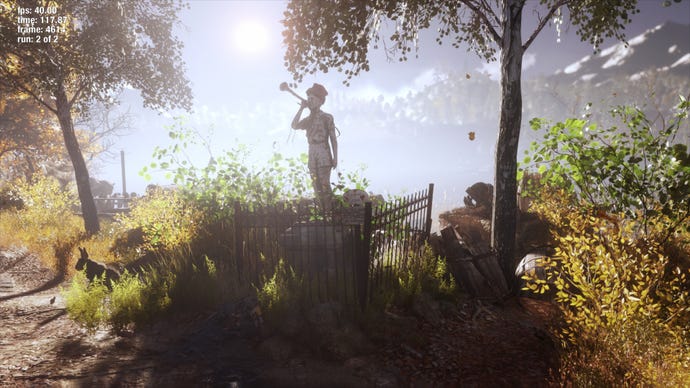
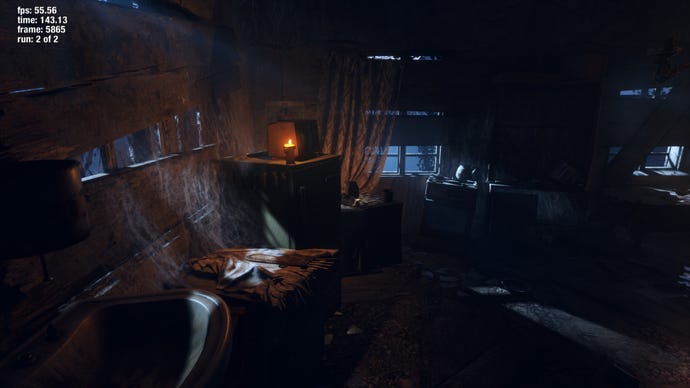
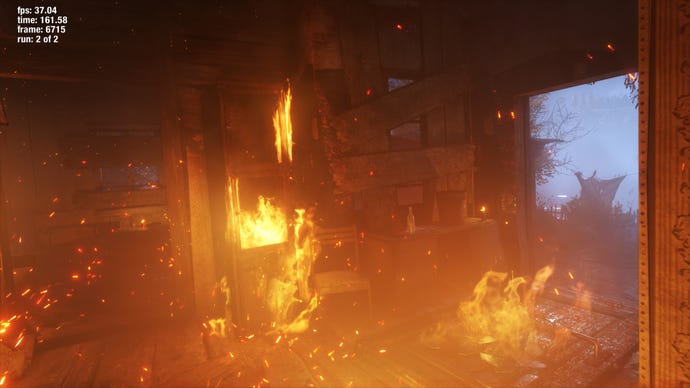

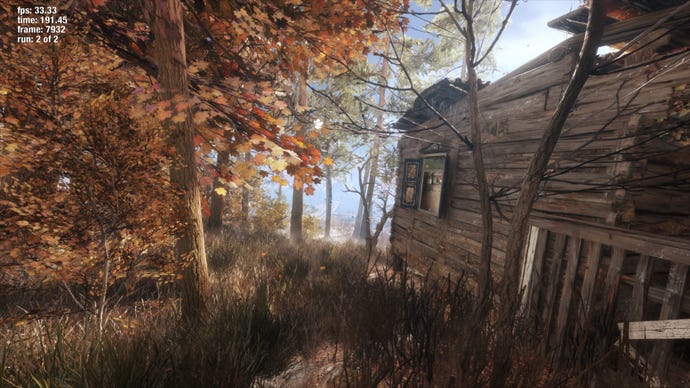

Then it's back outside to a rather demanding stretch of forest (almost every graphics card took a massive dip here) with a deer running across your field of vision, before the benchmark ends down at the riverside, day turning to night, and a rather nasty beasty floating around in the water.
Metro Exodus PC graphics performance: how to get the best settings
I stuck with the benchmark's preset quality settings during my tests, but it's worth pointing out that my review build of the benchmarking tool came with a very specific set of settings that aren't necessarily reflected in-game when you actually change the overall quality setting. The Shading Rate, for example, stays at 1.0x regardless of what quality setting you pick, and Motion Blur is always set to High, which isn't reflective of what I was using in the benchmark.
As a result, here are the settings I used across each of the four main quality options to obtain my results, and what I'd recommend you use in your own game as well:
Low quality:
Texture Filtering: AF 4x
Motion Blur: Low
Tessellation: Off
Advanced PhysX: Off
HairWorks: Off
Ray Tracing: Off
DLSS: Off
Shading Rate: 50%
Medium quality:
Texture Filtering: AF 4x
Motion Blur: Low
Tessellation: Full
Advanced PhysX: On
HairWorks: Off
Ray Tracing: Off
DLSS: Off
Shading Rate: 100%
High quality:
Texture Filtering: AF 16x
Motion Blur: Low
Tessellation: Full
Advanced PhysX: On
HairWorks: On
Ray Tracing: Off
DLSS: Off
Shading Rate: 100%
Ultra quality:
Texture Filtering: AF 16x
Motion Blur: Normal
Tessellation: Full
Advanced PhysX: On
HairWorks: On
Ray Tracing: Off
DLSS: Off
Shading Rate: 100%
There was also a specific RTX profile in my benchmarking tool, which was essentially the same as Ultra but with ray tracing and DLSS switched on. However, I should point out that the DLSS option was actually broken in my build, so it wasn't actually applied to any of the tests despite being set to On. It still works in-game, but given Metro's rather irritating quick-save/auto-save only options, this makes it a bit difficult to test accurately.
As such, I'm going to leave DLSS testing for a bit until it's available in the benchmark so I can keep everything nice and fair, and I'll update this piece with more results when it's been patched in. I've still included the ray tracing results, though, so at least you can see how much of a performance dip you can expect if you don't want to apply DLSS at all.
As for more general settings advice, keeping things like Advanced PhysX and HairWorks switched off is pretty much a given with this kind of game, but I also found that Low's 50% Shading Rate took an even bigger load off the GPU. As such, I'd recommend dropping that down a bit if you're having trouble in certain areas - perhaps not all the way down to 50% (or 0.5x as it's represented in-game), but maybe somewhere around the 0.7x mark if your graphics card is having a tough time of it.
I'd also recommended keeping Texture Filtering to AF 4x rather than AF 16x, as well as switching off Tessellation if you're still having trouble.
Metro Exodus PC graphics performance
With all that in mind, let's board this apocalypse train and take a look at some of them there graphics cards, eh? Just click the links below to see how each graphics card fared. For the record, my PC had an Intel Core i5-8600K and 16GB of RAM inside it, plus all the latest graphics drivers and Windows 10 updates installed. Naturally, this means I'm not really equipped to try the game's Extreme settings, but Nvidia have told me this doesn't actually add any additional graphics effects on top of what you get on Ultra - it just cranks them up to 11. Really, though, Extreme is for enthusiast PC systems only, and not for the likes of my mid-range build. As a result, the highest setting I've tried across every graphics card on test here is Ultra.
- Nvidia GeForce GTX 970
- Nvidia GeForce GTX 1050 Ti
- Nvidia GeForce GTX 1060
- Nvidia GeForce GTX 1070
- Nvidia GeForce GTX 1070 Ti
- Nvidia GeForce GTX 1650
- Nvidia GeForce GTX 1660
- Nvidia GeForce GTX 1660 Ti
- Nvidia GeForce RTX 2060
- Nvidia GeForce RTX 2060 Super
- Nvidia GeForce RTX 2070
- Nvidia GeForce RTX 2070 Super
- Nvidia GeForce RTX 2080
- Nvidia GeForce RTX 2080 Super
- Nvidia GeForce RTX 2080 Ti
- AMD Radeon R9 270
- AMD Radeon R9 290
- AMD Radeon RX 570
- AMD Radeon RX 580
- AMD Radeon RX 590
- AMD Radeon RX Vega 64
- AMD Radeon RX 5700
- AMD Radeon RX 5700 XT
- AMD Radeon 7
Nvidia GeForce GTX 970
Even after all these years since its release, the Nvidia GeForce GTX 970 continues to be an excellent graphics card in the face of today's big blockbuster, and can even handle Metro Exodus without that many compromises. It helps, of course, that the GTX 970 still has a healthy 4GB of memory to its name, but even this isn't quite enough to really tackle some of the game's higher quality settings.
The particular card I've used here is Zotac's Dual Fan edition, which is a fraction faster than Nvidia's reference specification for the GTX 970, so some results may vary depending on which type of card you've got. For example, Zotac's Dual Fan has a base clock speed of 1076MHz and a boost clock speed of 1216MHz, which is a smidge higher than other GTX 970s out there, but I'm still pretty confident that the speeds I've outlined below should be pretty representative no matter which third party card you happen to have.
Can I play this at 1920x1080?
Yes indeed. While Low is your best bet for the smoothest frame rates around (I saw an average of 80fps in the benchmark), I think you'll probably still get a pretty good experience on Medium quality. Here, I saw an average of 44fps overall, with highs up in the 70s, but it may still chug here and there when you get out into some of the game's open world areas thanks to the benchmark's lows of 25-ish. This only occurred during the benchmark's tough forest section, though, as less dense areas of the Taiga's wilderness still ran perfectly smoothly.
High, on the other hand, is probably a bit too much for the GTX 970 at this resolution, as here I only saw an average of 34fps, with chugging lows of 20fps.
Can I play this at 2560x1440?
Yes, but once again your best chances of getting a smooth frame rate are using the Low quality preset I described on the previous page, which will net you a very decent 62fps average. I still saw the occasional drop to 35, but I also saw highs of 112fps, so it really depends how much is onscreen as to what kind of frame rate you'll get.
Still, Medium is probably a step too far for this graphics card, as this only produced an average of 32fps with lows of 20fps again - much like trying to play the game on High at 1080p. As a result, I'd stick to Low here.
Can I play this at 4K?
Alas, given the GTX 970's troubles at lower resolutions, 4K is - unsurprisingly - out of the question here.
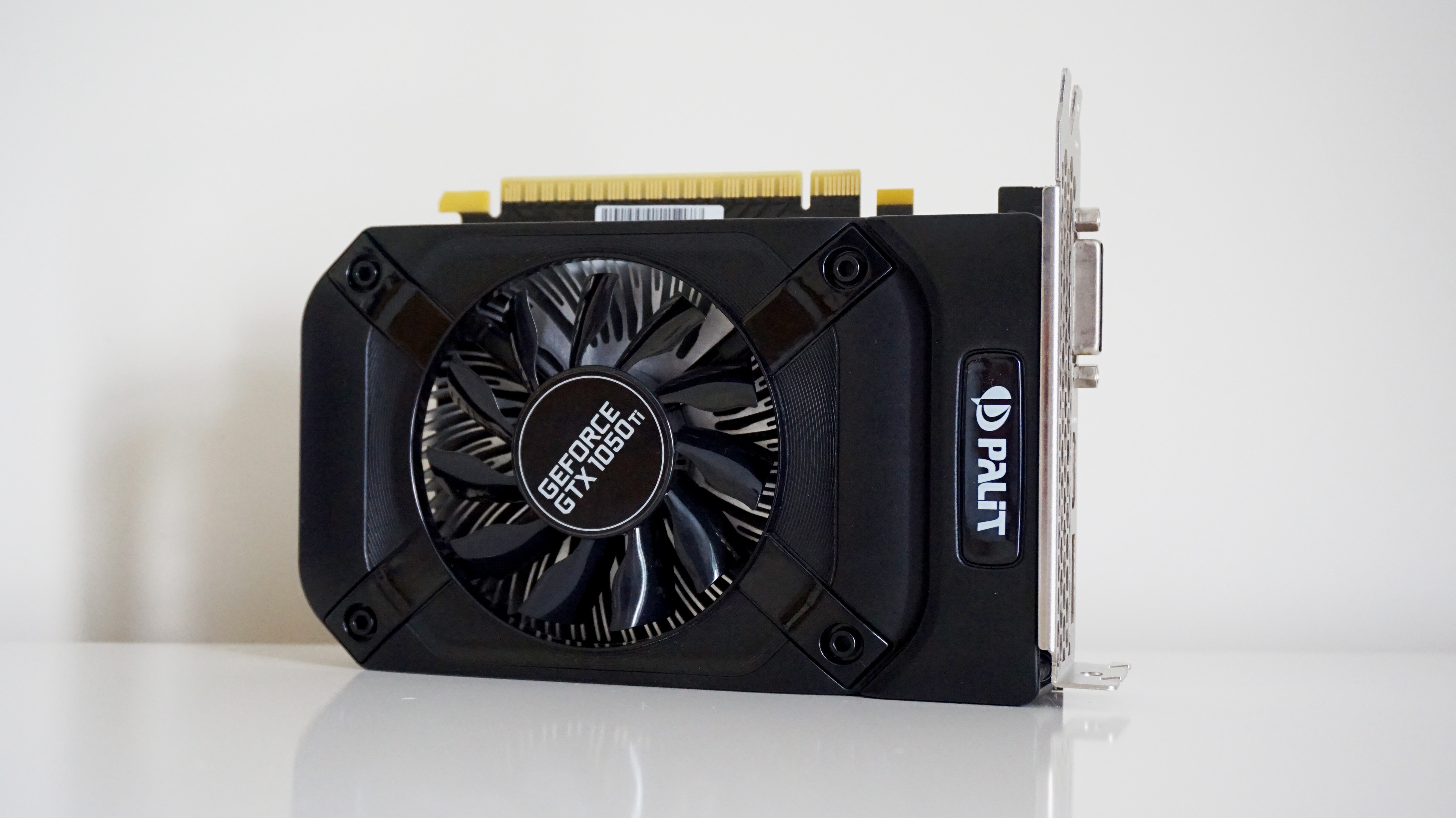
Nvidia GeForce GTX 1050 Ti
At first glance, you'd probably think Nvidia's GeForce GTX 1050 Ti isn't really up to the task of playing Metro Exodus at 1080p, but even this tiddler of a GPU can tame it with the right settings. Or at least the 4GB version of the card can. Those with 2GB models may have to settle for a resolution of 1280x720 if you're after 60fps, as even 4A Games only suggest 30fps at 1080p for the regular GTX 1050 - and that's using its Low quality preset.
Happily, the 4GB GTX 1050 Ti I've got here from Palit is capable of a little bit more than 30fps on Low, which is good news all round. In fact, it's possible you may even do slightly better than what I've listed below, as this particular Palit is actually a touch slower than a lot of its rivals thanks to its base clock speed of 1290MHz and a boost clock speed of 1392MHz. As a result, I'd say the following results are probably more of a baseline level of performance than the absolute best case scenario.
Can I play this at 1920x1080?
You can indeed, although I'd recommend sticking with Low unless you want a janky horror fest of a slideshow frame rate. Here, I got a perfectly acceptable average of 54fps, and even the toughest sections of the benchmark never went below 30fps.
Medium, however, saw the average plummet to 31fps, with a fair stretch of time spent significantly below that.
Can I play this at 2560x1440?
Kind of, but you're going to have to settle for Low again, and even then you're only looking at an average frame rate of 42fps. The benchmark saw the very odd dip down to 24fps at this resolution, but most of the time it stayed above 30fps. So yes, you can get away with Low here, but it may get a bit choppy at times. Medium, on the other hand, only averaged around 22fps.
Can I play this at 4K?
Pffft. Don't even try it, mate.

Nvidia GeForce GTX 1060 (6GB)
It's worrying indeed when even Nvidia's GeForce GTX 1060 isn't recommended for 60fps at 1920x1080, but fear not, trusty 6GB GTX 1060 owners, for your card is still perfectly capable of playing Metro Exodus, just not at the shiniest graphics settings. It sure is a tough old beast, I'll tell you that, but I still got some pretty good results both at 1080p and 1440p, and even a smidge of 4K. So stick that in your gas mask filter and smoke it.
Admittedly, the Asus GeForce GTX 1060 OC 9Gbps edition I've got here isn't actually available to buy any more, but with a base clock speed of 1584MHz and a boost clock speed of 1809MHz, it's definitely one of the upper-end models that was ever produced. The only GTX 1060 cards with faster clock speeds are Asus' own ROG Strix model and EVGA's SSC Gaming ACX 3.0 version. As a result, the results below are probably a best case scenario for current 6GB GTX 1060 owners, but there's still plenty to like here.
Can I play this at 1920x1080?
You absolutely can and Medium is probably the closest you're going to get to 60fps, as I saw an average of 56fps here when I ran it through Metro's benchmarking tool. You may still see the odd chug here and there, admittedly, as even with this super smooth average there were still moments when the frame rate dipped all the way down to 26. Only briefly, mind, but it dipped nonetheless.
You can probably even manage High if you don't mind an average of 42fps, but when it chugs at this setting, it really chugs, with lows all the way down in the mid-teens. If you're playing at 1080p, Medium offers almost certainly the best balance between speed and graphical fidelity.
Can I play this at 2560x1440?
Again, yes, but Low is by far the smoothest road to success here, averaging 78fps in the benchmark. Medium wasn't too bad, averaging 41fps, but once again saw some pretty big lurches down to 23fps when the screen was dense with vegetation. It's doable, but it may not be particularly pleasant over the long term.
Can I play this at 4K?
Surprisingly, yes, but Low is once again your best friend here, producing an average of 50fps. Medium, on the other hand, is just too much at this resolution - as you'd expect, really - averaging just 23fps.

Nvidia GeForce GTX 1070
4A Games' own recommended card for 60fps at 1920x1080, Nvidia's GeForce GTX 1070 is definitely much better suited to running Metro Exodus than any of its less powerful siblings. With 8GB of memory under the hood, you'll see much smoother frame rates at Metro Exodus' higher graphics settings here, but even this card sometimes struggled to keep its cool on the very best quality options.
Indeed, with Asus' ROG Strix Gaming model being one of the faster GTX 1070s out there, the results below are probably some of the better speeds you can expect to see from this type of card thanks to its high base clock speed of 1632MHz and boost clock speed of 1835MHz. Still, there are plenty of slick frame rates to be had here, regardless of whether you're playing at 1080p, 1440p or even a touch of 4K.
Can I play this at 1920x1080?
Definitely. Ultra is perhaps a touch out of reach for the GTX 1070, averaging 46fps with some juddery lows of 22fps at times, but High was much more comfortable, averaging 55fps with its minimum frame rate never dipping below 30fps.
If that doesn't sound like your nuclearised cup of tea, then whack it on Medium and enjoy a lovely smooth average of 73fps.
Can I play this at 2560x1440?
You sure can, but I'd urge you to stick to Medium here, as this produced a much smoother average of 53fps compared to High's 42fps. Medium also never went below 30fps, whereas High stuttered along at just 23fps in places, which definitely isn't what you want in heated confrontation scenes or those quieter moments when you just want to appreciate the damn pretty scenery.
Can I play this at 4K?
Kinda, but you'll have to go another quality rung down at this resolution, as even Medium only averaged 31fps at this resolution. Instead, you're much better off with Low here, which produced a lovely smooth average of 66fps and never dipped below 40fps.
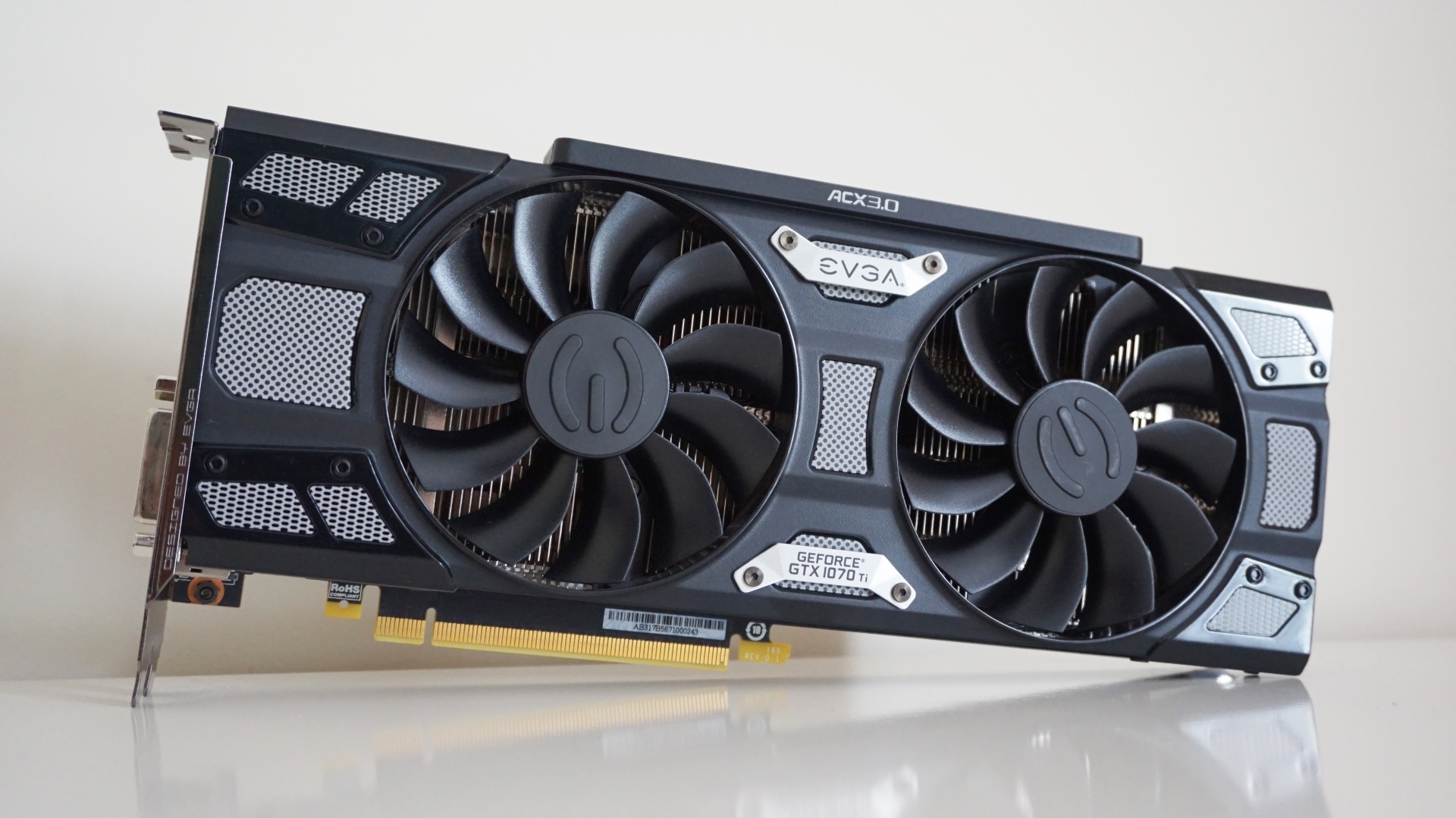
Nvidia GeForce GTX 1070 Ti
Now we're talking. Thanks to Nvidia's weird rule about every GTX 1070 Ti having the same base and boost clock speeds for some weird, inexplicable reason, this card's performance is much easier to predict than many other cards on this list, giving you a bit more certainly about what to expect when it comes to booting up Metro Exodus.
In truth, EVGA's SC Gaming model can technically skirt around this issue thanks to the optimisation options available in its Precision Boost software, but for the sake of keeping things fair and square, I've left it on its default base and boost clock speeds of 1607MHz and 1683MHz.
Can I play this at 1920x1080?
Good gracious, yes, and finally we can get into Ultra settings without running the risk of our PC catching fire. I saw an average of 52fps on this setting, with the occasional dip down to 30fps, but on the whole it was pretty damn smooth. Knocking that down to High will net you an even silkier average of 62fps, but when you're still looking at lows around 30fps, you may as well bung it on Ultra and take in all that pretty scenery while you're at it.
Can I play this at 2560x1440?
Yes indeed, although even the GTX 1070 Ti had a bit of trouble keeping its cool on the top graphics settings here. Instead, Medium is your friend here, which averaged 59fps overall with brief lows of 30fps. High, on the other hand, came in with an average of 47fps but lows of 25fps, while Ultra fell to 40fps with lows of just 20fps.
Normally, I'd be perfectly happy with an average of 40-50fps at this resolution, but those sub-30 lows show that Metro Exodus is just a bit too demanding when things get a bit hectic. As such, I'd urge you to stick to Medium here if you want to best and smoothest speeds.
Can I play this at 4K?
Sort of, as even here you're still looking at Low for the fastest ride, averaging 73fps in the benchmark, which is a damn sight better than Medium's 35fps average and lows of 20fps. The GTX 1070 Ti might be able to do 4K in other games, but here you're going to need a heck of a lot more power to do it properly.

Nvidia GeForce GTX 1650
Nvidia's GeForce GTX 1650 is a decent 1080p graphics card for those on a budget, but as you may have seen from my GTX 1650 vs RX 570 and GTX 1650 vs GTX 1050 Ti comparison pieces, it can still struggle to hit a decent frame rate in some of today's top games. So it proves with Metro Exodus, where you're still only looking at playing on Low or Medium at the very most across various different resolutions.
This Zotac model is, admittedly, one of the cheapest GTX 1650 cards you can buy right now, but it does have a slightly higher boost clock speed than Nvidia’s reference specification, coming in at 1695MHz as opposed to 1665MHz. This shouldn't make a huge difference, though, so I'm pretty confident you'll be able to take the results below as the bare minimum kind of performance you can expect to see from all GTX 1650s you can buy today.
Can I play this at 1920x1080?
Yes, but it might be a bit of a struggle. On Low, for example, the GTX 1650 was able to hit a decent average of 77fps in the game's benchmarking tool, but this quickly fell to a choppier average of 40fps on Medium. As a result, you can probably get away with Medium quality, but make sure to turn off things like Advanced PhysX to give yourself more of a chance. If that doesn't work, try turning down the Shading Rate to somewhere between 100% (Medium) and 50% (Low).
Can I play this at 2560x1440?
Yes, but only on Low. Here, you should get an average of 58fps, but whack it up to Normal and you can expect to see it tumble all the way down to an average of 28fps.
Can I play this at 4K?
Alas, this resolution is too much for the humble GTX 1650, as even Low only resulted in an average of 36fps in the game's benchmarking tool.
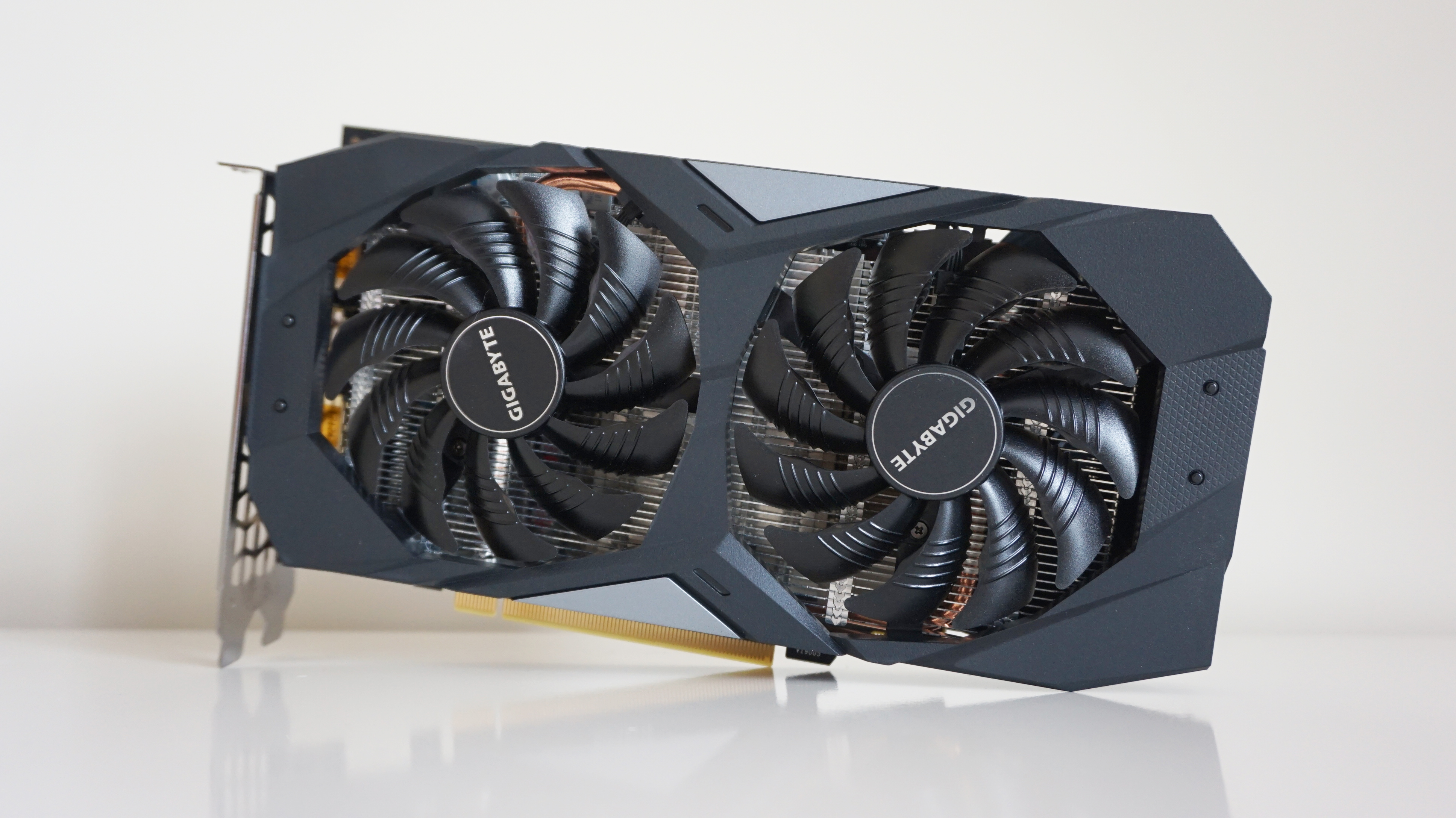
Nvidia GeForce GTX 1660
The Nvidia GeForce GTX 1660 may be one of the best graphics cards you can buy today for 1080p gaming, but even this GPU may well have met its match with Metro Exodus.
Admittedly, Gigabyte's entry-level model is one of the cheapest GTX 1660 cards around right now, but with 6GB of memory and a boost clock speed of 1830MHz (up from Nvidia's reference spec of 1785MHz), it's certainly no slouch in the old specs department. As a result, the figures below should be broadly representative of what you'll find on other GTX 1660 cards available today.
Can I play this at 1920x1080?
Absolutely, although Medium is probably about as good as it's going to get when it comes to maintaining a steady frame rate. I saw an average of 63fps using these graphics settings in the game's benchmarking tool, which dropped to 47fps when I kicked it up to High. That's probably still just about playable, especially if you fiddle about with some of the settings I mentioned above, but I reckon Ultra will almost certainly be beyond its reach, as this averaged just 39fps.
Can I play this at 2560x1440?
Yes, although again Medium is probably going to be your best bet here, with an average of 45fps. High, for example, dropped down to 35fps, with lows down in the 21fps region.
Can I play this at 4K?
I mean, technically you can, but anything higher than Low and its average of 57fps is going to be untenable, as Medium plunged the frame rate down to a juddering 26fps.

Nvidia GeForce GTX 1660 Ti
The Nvidia GeForce GTX 1660 Ti is hands down the best graphics card you can buy today for 1080p gaming without completely breaking the bank. It’s so nippy, in fact, that it's also the card I currently recommend for what you should actually buy for playing games at 2560×1440 if you can't afford the RTX 2060. Its Metro Exodus performance might challenge that claim a bit, but as you'll see from the results below there's still plenty to like here.
I've got the Asus ROG Strix GeForce GTX 1660 Ti on test here, which is admittedly one of the faster types of GTX 1660 Ti out there at the moment thanks to its high boost clock speed of 1890MHz. However, having tested a number of GTX 1660 Ti cards over the past couple of months, even the cheapest GTX 1660 Ti cards are maybe only a maximum of 5fps behind Asus’ ROG Strix model, so the results below shouldn’t be too far out of line with what you’ll see elsewhere.
Can I play this at 1920x1080?
You sure can, and you can even get away with playing on High thanks to a smooth average of 54fps in its benchmarking tool. You could probably just about push it to Ultra if you really felt like it, where it averaged 45fps, but for the smoothest gun fights I'd recommend sticking to High.
Can I play this at 2560x1440?
Absolutely, although High might be just out of reach this time thanks to an average of just 41fps. Instead, Medium is probably going to offer the smoothest train ride at this resolution, thanks to its average frame rate of 53fps.
Can I play this at 4K?
Sort of, but Low and an average of 65fps is the best you can probably expect here, as shunting it up to Medium literally cut the frame rate in half, chugging along at just 31fps.

Nvidia GeForce RTX 2060
4A Games list the Nvidia GeForce RTX 2060 as one of their recommended graphics cards for 60fps at 1920x1080, but to say that's all the RTX 2060 is capable of would be selling it short. Indeed, based on my results, this isn't just a great card for 1080p play, but also for 1440p and even a smidge of 4K if you feel like it. You'll have to make a couple of compromises in the graphics department, of course, but 60fps is still possible regardless of resolution.
I've got the Founders Edition on test here, which has a base clock speed of 1365MHz and a boost clock speed of 1680MHz. This is fairly typical compared to other third party RTX 2060 cards, a lot of which push its boost clock speed even higher. As a result, these speeds are probably the least you can expect to see from an RTX 2060, with faster cards likely able to squeeze even more out of it. Either way, this is a great card for playing Metro Exodus.
Can I play this at 1920x1080?
You betcha. High will deliver the smoothest frame rates with an average of 64fps, but Ultra will still bag you a very agreeable average of 52fps for your trouble. What's more, adding in ray tracing only saw that drop to 50fps on this graphics setting, with identical lows of around 30fps to boot, so this is definitely the resolution to pick if you want to experience the game at its very best.
Can I play this at 2560x1440?
Another big you betcha here. Medium will get you closest to 60fps with an average of 62fps without any ray tracing enabled, but I'd argue an average of 48fps on High is still perfectly feasible. Both saw lows around the 30fps mark, too, so it's not like opting for Medium will help prevent that from happening.
Things got a bit dicier when I turned on ray tracing, however, as that previous 62fps average on Medium dropped all the way down to 36fps with ray tracing set to High, so I'd imagine you'll need to switch on DLSS as well here to get the frame rate back up to something more acceptable. Stay tuned for more analysis early next week.
Can I play this at 4K?
A slightly smaller you betcha this time, but Low is still doable if you really fancy it, as here I managed a very smooth average of 76fps - again, without ray tracing. With ray tracing, you're looking at something closer to 43fps, but with frequent dips to 20fps, I don't think it's really worth the hassle here.

Nvidia GeForce RTX 2060 Super
A spruced up version of the original RTX 2060, the RTX 2060 Super is Nvidia's answer to AMD's Radeon RX 5700. Personally, I think the RX 5700 has the edge overall, as you can see from my big RTX 2060 vs RTX 2060 Super vs RX 5700 comparison piece, but the RTX 2060 Super is still a fantastic 1440p card in its own right - particularly if you want to take advantage of all the ray tracing and DLSS goodness in Metro Exodus.
Nvidia's Founders Edition of the RTX 2060 Super is actually bang in line with their own reference spec this time (the Nvidia FE version of the original RTX 2060 was overclocked), so should be taken as very much a baseline for RTX 2060 Super performance rather than the absolute limit. As such, you may well find that other RTX 2060 Super cards are a bit faster than what I've detailed here, but there's still plenty of good numbers to see here, especially if you're in the 1080-1440p zone.
Can I play this at 1920x1080?
All aboard the 1080p train, because this thing's pulling out of the station at top speed! Crank it up to Ultra and enjoy a smooth average of 61fps. Ray tracing might throw in a few hiccups at this setting, admittedly, thanks to an average of 52fps, but if that's no good then knocking it down to High will net you a much smoother average of 57fps.
Can I play this at 2560x1440?
The 1440p train keeps on rolling, too, although this time you may have to switch track and opt for High. Here, the RTX 2060 Super managed a very admirable 57fps average, whereas Ultra pushed that down to 49fps.
As for ray tracing, I'd advise Medium only for this particular resolution, as even in the benchmark the RTX 2060 Super only managed an average of 46fps.
Can I play this at 4K?
A bit of a rockier ride, here, but still doable thanks to an average of 43fps on Medium. It's not exactly ideal, sure, but it can be done.
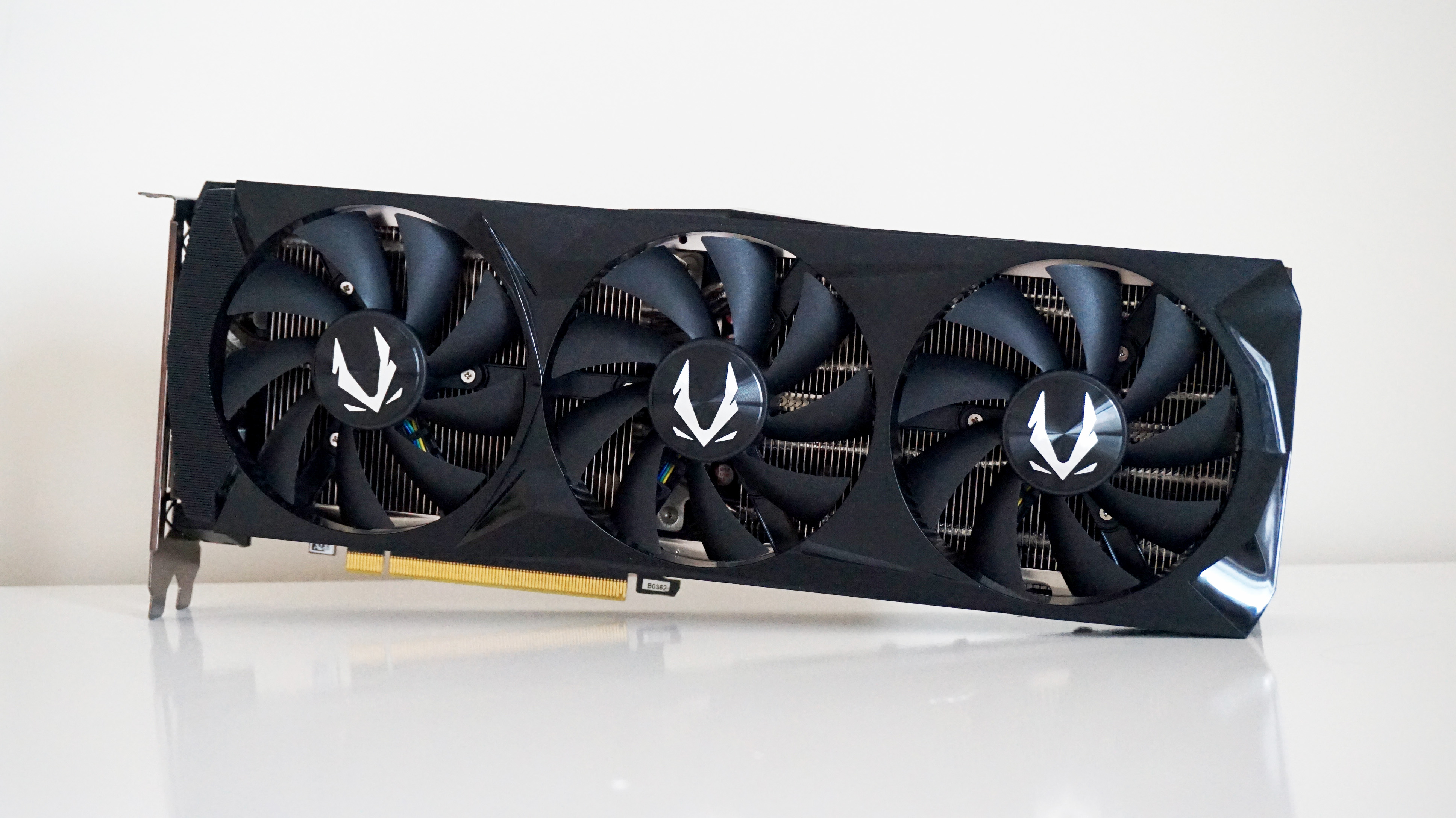
Nvidia GeForce RTX 2070
Nvidia's GeForce RTX 2070 is probably on its way out now there's the RTX 2070 Super around for pretty much the same amount of money, but it's still a great partner in apocalyptic crime for old Metro Exodus. It's also a good indicator of what to expect for current GTX 1080 owners, too.
I should point out, of course, that the Zotac AMP Extreme card I used to get these results is one of the faster RTX 2070 cards out there thanks to its high boost clock speed of 1860MHz (for reference, even Nvidia’s own Founders Edition of the RTX 2070 only goes up to a maximum of 1710MHz). As a result, these speeds are probably more of a best case scenario for this particular card than something a bit broader, but as you’ll see, there's still lots of high numbers here.
Can I play this at 1920x1080?
Does this mutant rat have five eyeballs? Of course you can! Whack it on Ultra and enjoy a lovely smooth average of 66fps, why don't you? You can probably keep it on Ultra if you want to play with ray tracing, too, as setting the ray tracing to High on this graphics setting still got me a sweet, sweet average of 57fps.
Can I play this at 2560x1440?
Does that mutant pigeon have six, scabby feet? Yes indeed. Ultra is probably doable at this resolution thanks to an average of 53fps, but your best bet is probably sticking with High, where you'll get a much smoother average of 62fps.
If you want to throw ray tracing into the mix, though, then you'll probably have to knock it down to Medium, as even this only produced an average of 51fps with ray tacing on High.
Can I play this at 4K?
Does this - all right, you know where I'm going with this. Yes siree, but again, you'll most likely have to knock it down to Medium this time, as even that only managed an average of 48fps in the game's benchmark. There's probably no need to turn it all the way down to Low (even if it does produce an incredibly silky average of 103fps), but a healthy balance between the two (maybe turn off PhysX, for example) should put you on the right path.
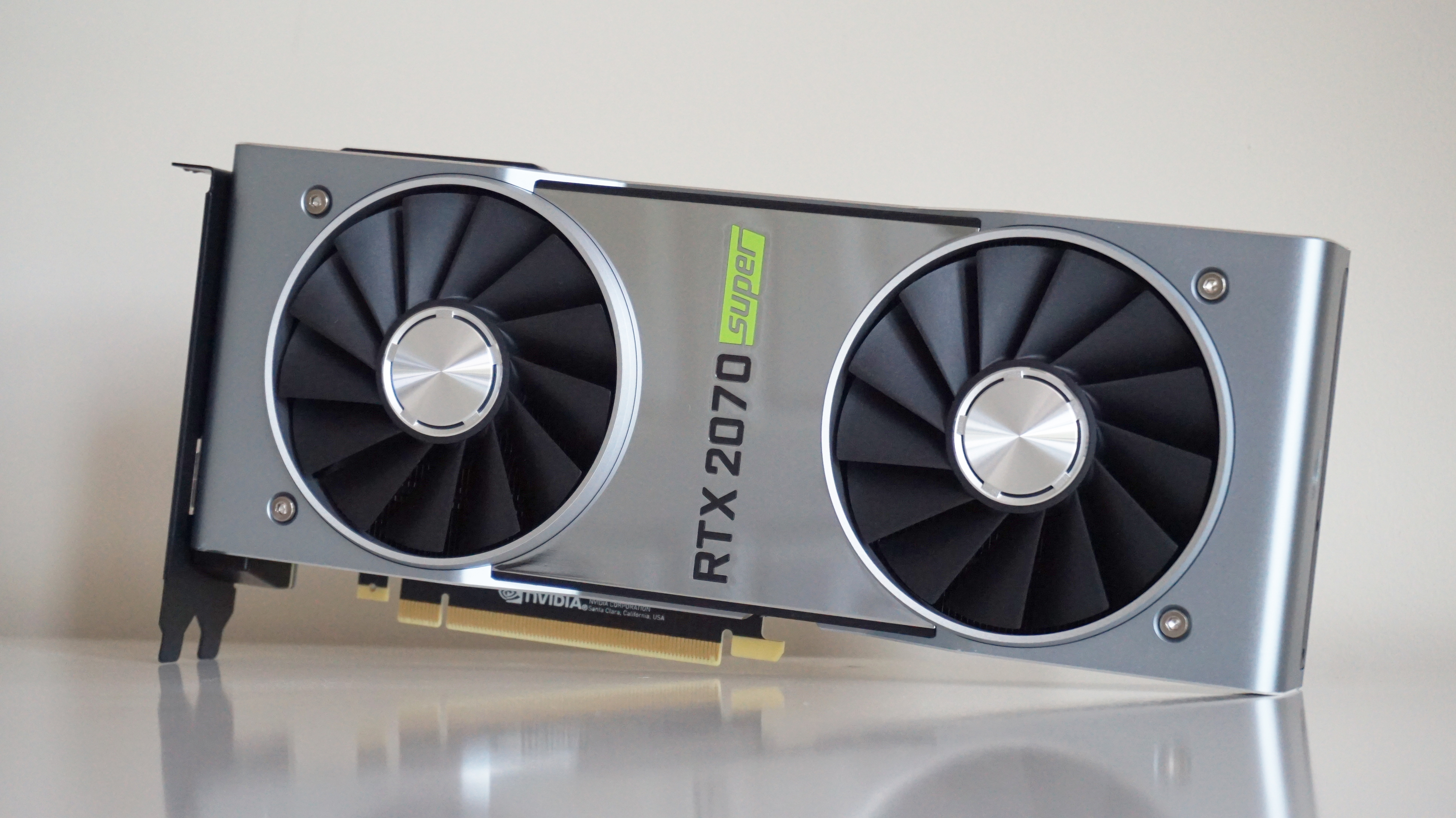
Nvidia GeForce RTX 2070 Super
With a price more or less exactly the same as the regular RTX 2070, the slightly faster RTX 2070 Super is pretty much a no-brainer if you're adamant about getting the bestest best GPU for 1440p gaming currently made by Nvidia. For me, I still think AMD's cheaper Radeon RX 5700 XT is better value for money overall in this kind of price range, but there's no denying the RTX 2070 Super is the better card for playing Metro Exodus with, if only so you can take advantage of all its shiny ray tracing and DLSS gubbins.
Much like my RTX 2060 Super results, the Nvidia Founders Edition of the RTX 2070 Super follows the reference spec for this particular card to the letter. No overclocking, nothing. As such, this is probably the slowest speeds you can expect to see from the RTX 2070 Super - although as you may have seen from my RTX 2070 Super benchmark showdown with cards from Asus and Zotac, you're not really gaining very much by spending more on an overclocked card. Still, regardless of whether you've got the FE edition or a fancy overclocked one, this is still a great card for playing Metro Exodus with.
Can I play this at 1920x1080?
Yes comrade, and you can enjoy the privilege of banging it up to Ultra, too, thanks to a lovely high frame rate of 71fps. Why not enjoy some ray tracing, too, while you're at it, as you should still be able to get a smooth 60fps average with ray tracing set to High on this particular graphics option.
Can I play this at 2560x1440?
Absolutely comrade, and once again you can stick it on Ultra and get a smooth average of 56fps for your trouble. High will probably ensure a more consistent 60fps, averaging 66fps overall, but I reckon Ultra is still perfectly within reach here.
As for ray tracing, though, High managed an average of 48fps, but Medium was probably the smoothest and most playable with an average of 54fps. High should still be achievable by turning on DLSS, mind, but those who prefer to have a pure ray tracing experience will probably be better off dropping the quality down.
Can I play this at 4K?
I mean, comrade can, but Medium and an average of 51fps is probably the best you're going to manage here - and don't even think about turning on ray tracing here. Instead, I'd recommend sticking with lower resolutions, if only to get those much prettier graphics.
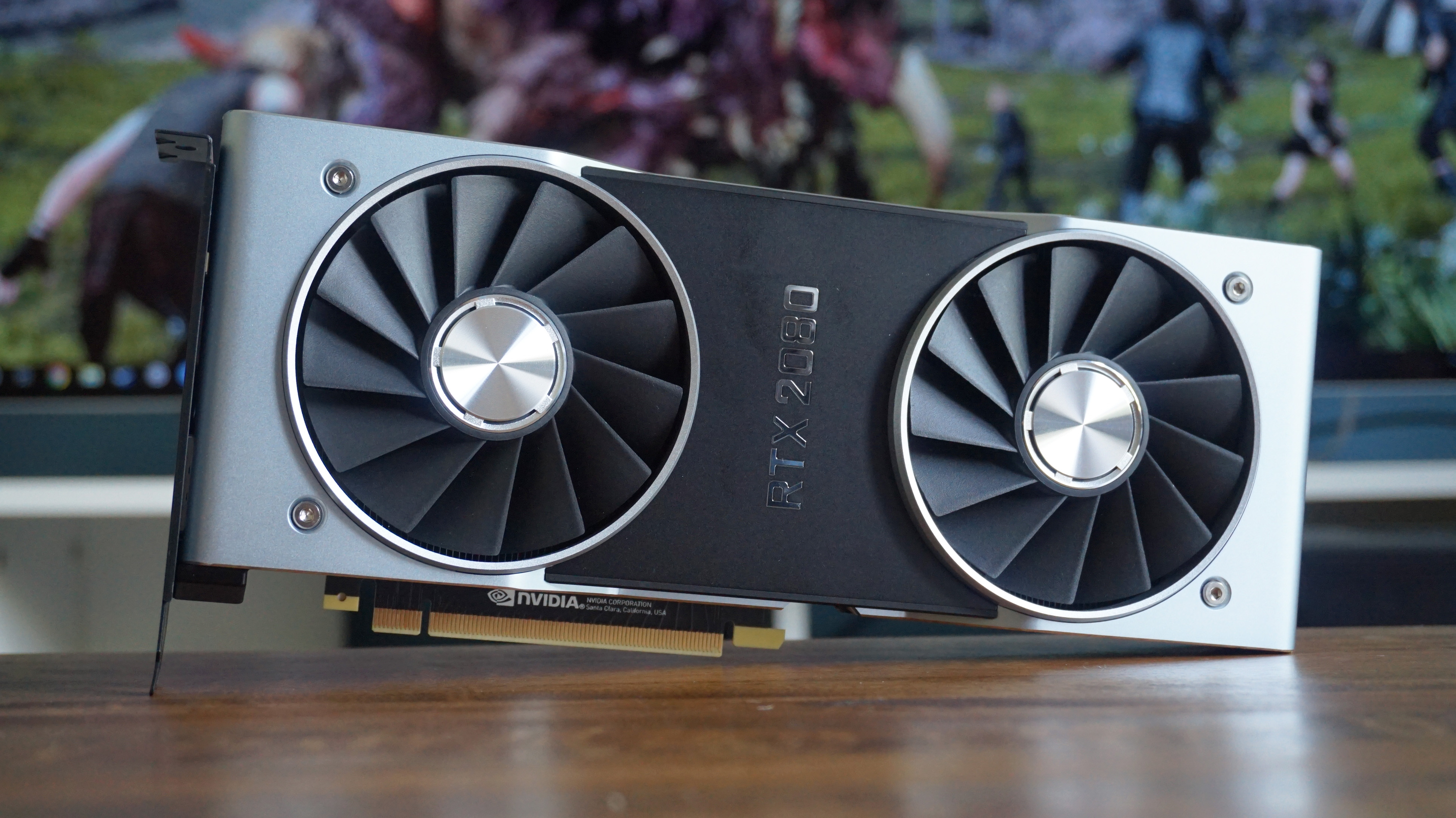
Nvidia GeForce RTX 2080
I may not have one of Nvidia's GeForce GTX 1080 Ti to test with Metro Exodus, but as we found out from my RTX 2080 review, this is arguably the next best thing. At least when it comes to the RTX 2080's raw performance figures, as this card also supports all of the fancy RTX features such as ray tracing and the frame rate-boosting DLSS tech as well. I'll be talking about both sets of results here (although just ray tracing for the time being as DLSS isn't currently working in the benchmark tool), so hopefully you'll get a pretty good idea of what's possible either with or without Nvidia's RTX features switched on.
Once again, I've got the Founders Edition here, which has a base clock speed of 1515MHz and a boost clock speed of 1800MHz. This is pretty much bang in the middle of what you'll find elsewhere on other third party cards, so the following results should be broadly representative of what the RTX 2080 can do, regardless of which type of card you have.
Can I play this at 1920x1080?
Yes indeed, and that's regardless of whether you have ray tracing switched on, either. I mean, that's probably the least you'd expect at this resolution given how much it costs, but even with my Core i5 CPU acting as a potential bottleneck with this particular GPU, I still saw a very fine average of 75fps on Ultra with no RTX enabled, and an equally lovely average of 65fps on Ultra with ray tracing set to High. Go forth and enjoy.
Can I play this at 2560x1440?
That's affirmative, and once again you shouldn't have a problem on Ultra regardless of whether you've got ray tracing switched on. Bizarrely, I got an average of 60fps on the usual benchmark, which only dropped to 57fps when I switched on ray tracing. Either the benchmark is lying to me, or it's actually fine either way. Multiple re-runs of said benchmark would appear to confirm the latter.
One thing I will note, however, is that I saw a lot more peaks and troughs with ray tracing enabled in the benchmark here, which might be why the overall average is so close to its non-ray traced score. Still, until I've had some time to do a more thorough investigation of what's going on here, that's your lot for now.
Can I play this at 4K?
Another big yep here, although Medium is probably as far as you're going to get before the frame rate starts to go a bit doolally. Without ray tracing, I saw an average of 54fps on the RTX 2080, which then dropped down to 44fps with ray tracing set to High. I still saw highs of around 58fps in ray tracing mode, mind (although regular Medium went all the way up to 90fps), so there's still plenty of potential for some smooth speeds here. Likewise, both the ray traced and non-ray traced versions of the benchmark saw lows of 30fps (with the occasional dip to 25fps with ray tracing switched on), but I imagine once I get Metro's DLSS working properly, those dips will be sorted right out.
Otherwise, non-ray traced High will sit you down at an average of 43fps and lows of 25fps, which is probably a step too far for most people.
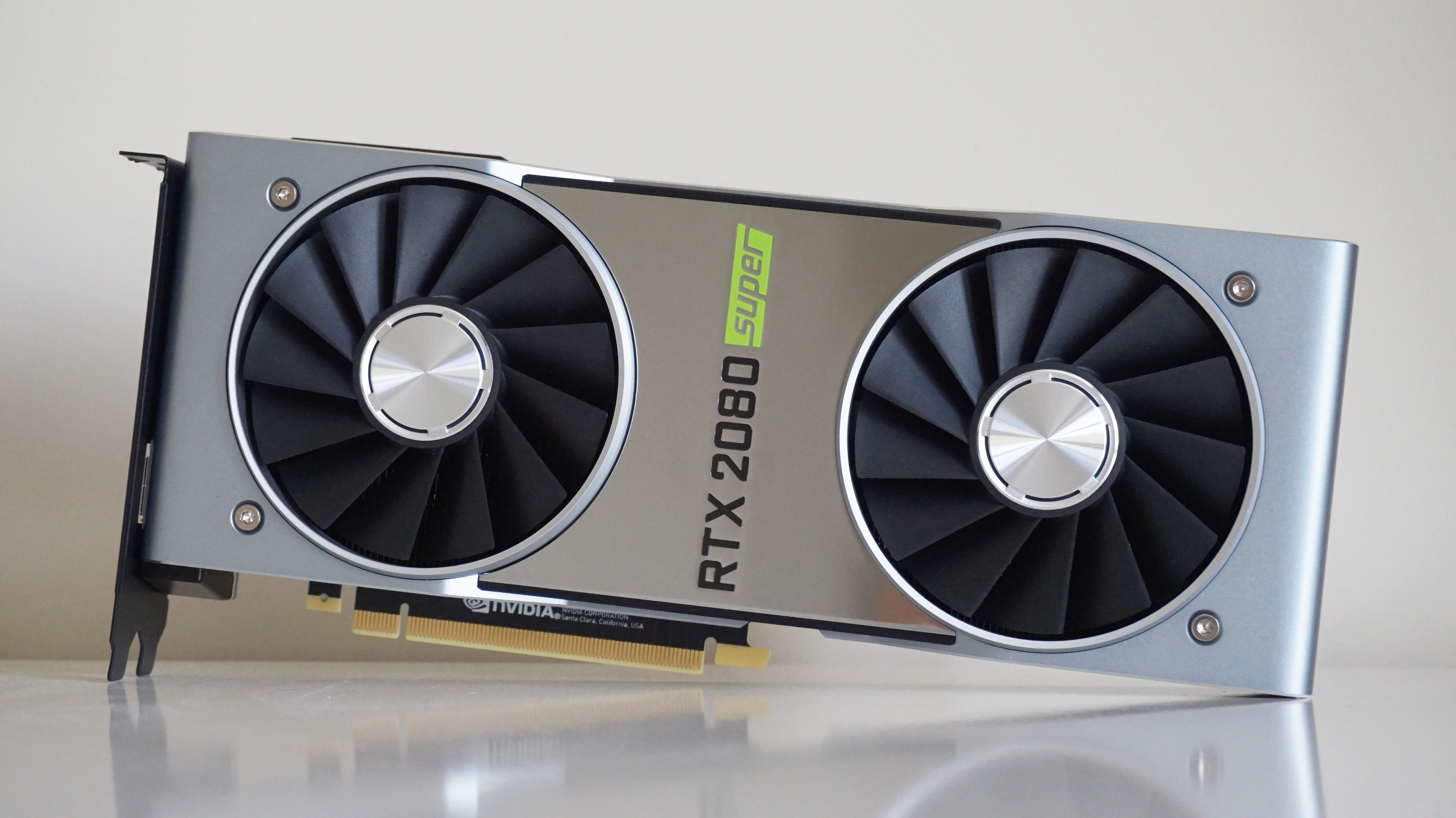
Nvidia GeForce RTX 2080 Super
Instead of simply offering reference spec-level performance like the rest of the Nvidia RTX Super family, the Founders Edition of the RTX 2080 Super is a little bit more interesting thanks to the higher clock speed of its 8GB of memory. Clocked at 15.5 Gbps instead of the usual 14 Gbps like every other RTX card you can buy right now, this gives the RTX 2080 Super a much more noticeable lift over its non-Super sibling than either the RTX 2070 Super or RTX 2060 Super do with their respective predecessors.
Of course, that's true of all RTX 2080 Super cards, but the Nvidia Founders Edition is still a great card in its own right. As you may have seen in my RTX 2080 Super benchmark showdown, where I pitted it against Zotac's super fast AMP Extreme edition of the card, they're pretty much neck and neck, showing you needn't spend loads on a more expensive card just because its GPU is slightly clocked slightly higher. As a result, the results below should be pretty representative of all RTX 2080 Super cards out there right now, and as you'll soon see, there's a lot to like.
Can I play this at 1920x1080?
You absolutely can, so why not crank it up to Ultra and enjoy a sweet average of 81fps? Want ray tracing too? Leave it on Ultra, my friend, because you'll still get a smooth average of 69fps with ray tracing on High here.
Can I play this at 2560x1440?
Yes siree, and once again, it's Ultra time. Here, you'll get a lower, but still incredibly smooth average of 64fps, and even an average of 51fps with ray tracing set to High.
Can I play this at 4K?
Can do, captain, although even the mighty RTX 2080 Super is still more of a Medium kind of card here, thanks to an average of 58fps. High is probably just about doable, but you're still only looking at an average of 46fps here, so probably best to stick to Medium if you can stomach it. As for ray tracing, you're probably better off doing it at a lower resolution to be honest, as even on Medium it only managed an average of 34fps with ray tracing set to High.
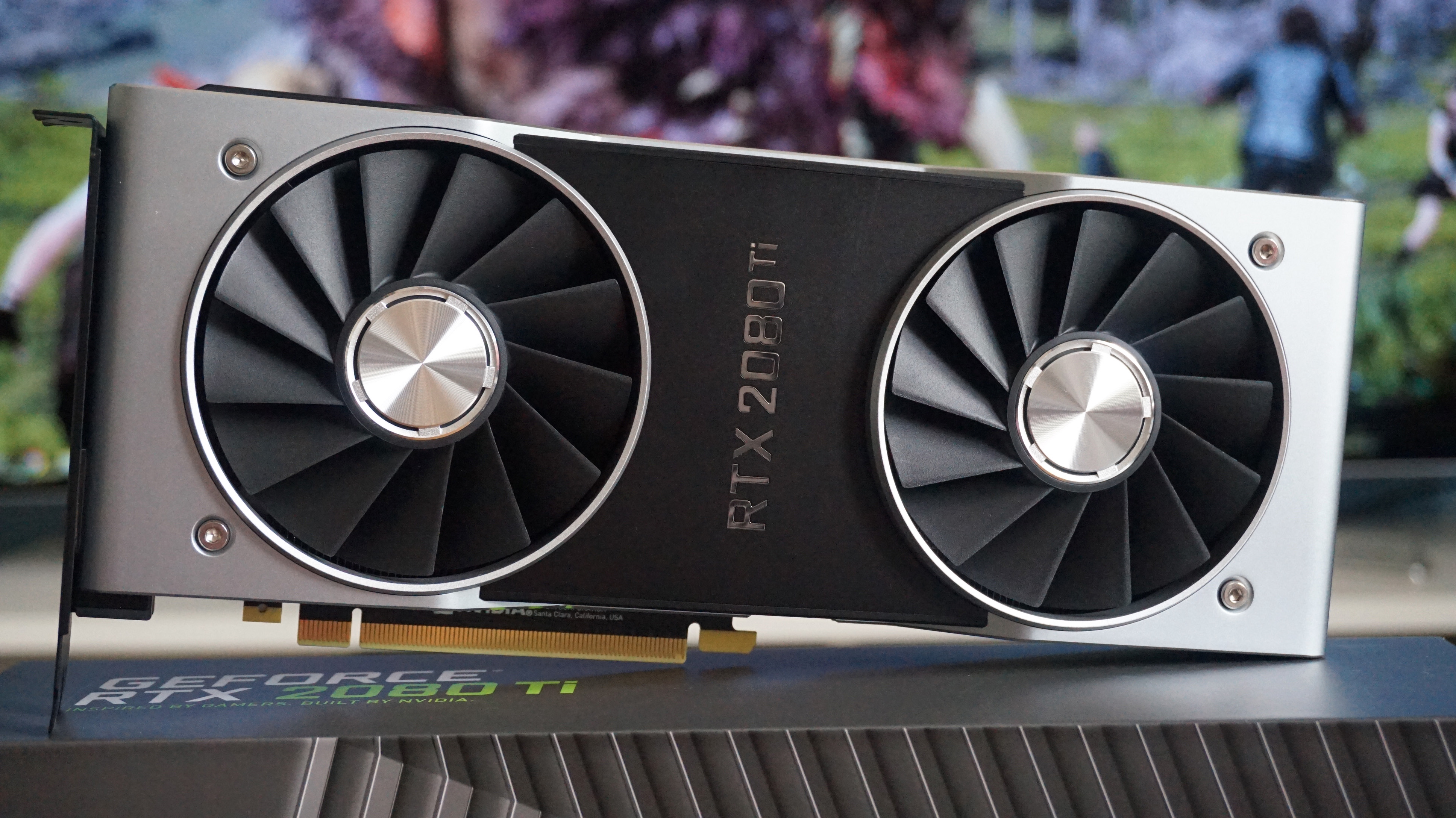
Nvidia GeForce RTX 2080 Ti
Here it is, the big whopper itself. If you can't count on the world's best graphics card to do 60fps at 4K, then what hope do we have? This is the card 4A Games themselves recommend for playing on the absolute top settings, and they sure aren't joking, either.
Much like my RTX 2080 scores, my Core i5 is probably hampering my overall 1080p results here somewhat, so please do assume that you'll be able to get at least these kinds of speeds with a properly equipped PC, if not significantly higher. Either way, the RTX 2080 Ti is definitely what you're going to need if you're hankering to play Metro Exodus at its very ray traced best.
Can I play this at 1920x1080?
A big thumbs up here. Not only are you looking at an average of at least 86fps on Ultra at this resolution, but you're also looking at a minimum of 82fps with ray tracing set to High. You may still experience the odd judder with ray tracing switched on, as the benchmark hit lows of around 40fps in some of the more graphically intense sections of the benchmark, but I'd imagine that switching on DLSS will sort that right out. Watch this space.
Can I play this at 2560x1440?
Another thumbs up, and another big tick for Ultra settings. In fact, my ray traced and non-ray traced averages were just two frames apart here - 74fps for no RT gubbins and 72fps in favour of RT gubbins (on High). I also saw very similar lows for both profiles - 45ish for no ray tracing and 40 with ray tracing, but I'd hazard a guess that a more powerful CPU will probably knock that back up nearer 60 for each of them. And even if it doesn't, DLSS will no doubt aid it even further.
Can I play this at 4K?
Alas, I have run out of thumbs, but if I had more, they'd definitely be in the upright position. While Normal will net you a smooth 69fps average (or a ray traced 40fps average), the RTX 2080 Ti is equally comfortable on High at this resolution, averaging a very agreeable 56fps even with my somewhat under-powered CPU. That dropped to 40fps when I added in ray tracing (plus the odd dip below the 30fps line), but I reckon DLSS will make up for any shortfall here once I've been able to test that out.
You're probably perfectly fine playing Metro Exodus on Ultra at 4K if the rest of your PC's up to the task. Mine only managed an average of 49fps sans ray tracing (although weirdly an average of 52fps with it switched on), but my lack of processing power also meant I saw lows of around 30fps here, and occasionally even sinking below that as well with ray tracing turned on. Still, I'll be re-testing both the RTX 2080 and RTX 2080 Ti with more powerful CPUs as soon as I can get my hands on them to give you some more accurate results.

AMD Radeon R9 270
Oh, R9 270, you cheeky chappy, you. Think you're tough enough to play with the Metro Exodus big boys are you? Awwww. Well aren't you a dear. Sadly, you need to be THIS tall to climb aboard the fun time apocalypse train, and you my friend are only THAT tall. Come back next time when you've grown a bit, eh?
Can I play this at 1920x1080?
If an average of 28fps on Low is your idea of 'playing at 1920x1080', then go right ahead pal. Just watch out for those 7fps pot holes every five seconds. I mean, even dropping the resolution down to 1280x720 didn't really yield any better results here, averaging 31fps with lows of 10fps, so if you're determined to play Metro Exodus on an R9 270, you're probably going to have to go drop even lower to get a decent frame rate.
Can I play this at 2560x1440?
What's this, my Geiger counter has gone into overdrive? TICK TICK TICK TICK TICK TICK TICK TICK TICK TICK TICK TICK TICK TICK TICK TICK TICK NOPE TICK TICK TICK TICK TICK TICK TICK TICK TICK TICK NU UH TICK TICK TICK TICK TICK THANK YOU BYE
Can I play this at 4K?
TICK TICK TICK TICK TICK TICK TICK TICK TICK TICK TICK TICK TICK TICK TICK TICK TICK TICK TICK TICK TICK TICK TICK TICK TICK TICK TICK TICK TICK TICK TICK TICK TICK TICK TICK TICK TICK TICK TICK TICK TICK TICK TICK TICK TICK TICK TICK TICK TICK TICK TICK TICK TICK TICK TICK TICK TICK TICK TICK TICK TICK TICK TICK TICK TICK TICK TICK
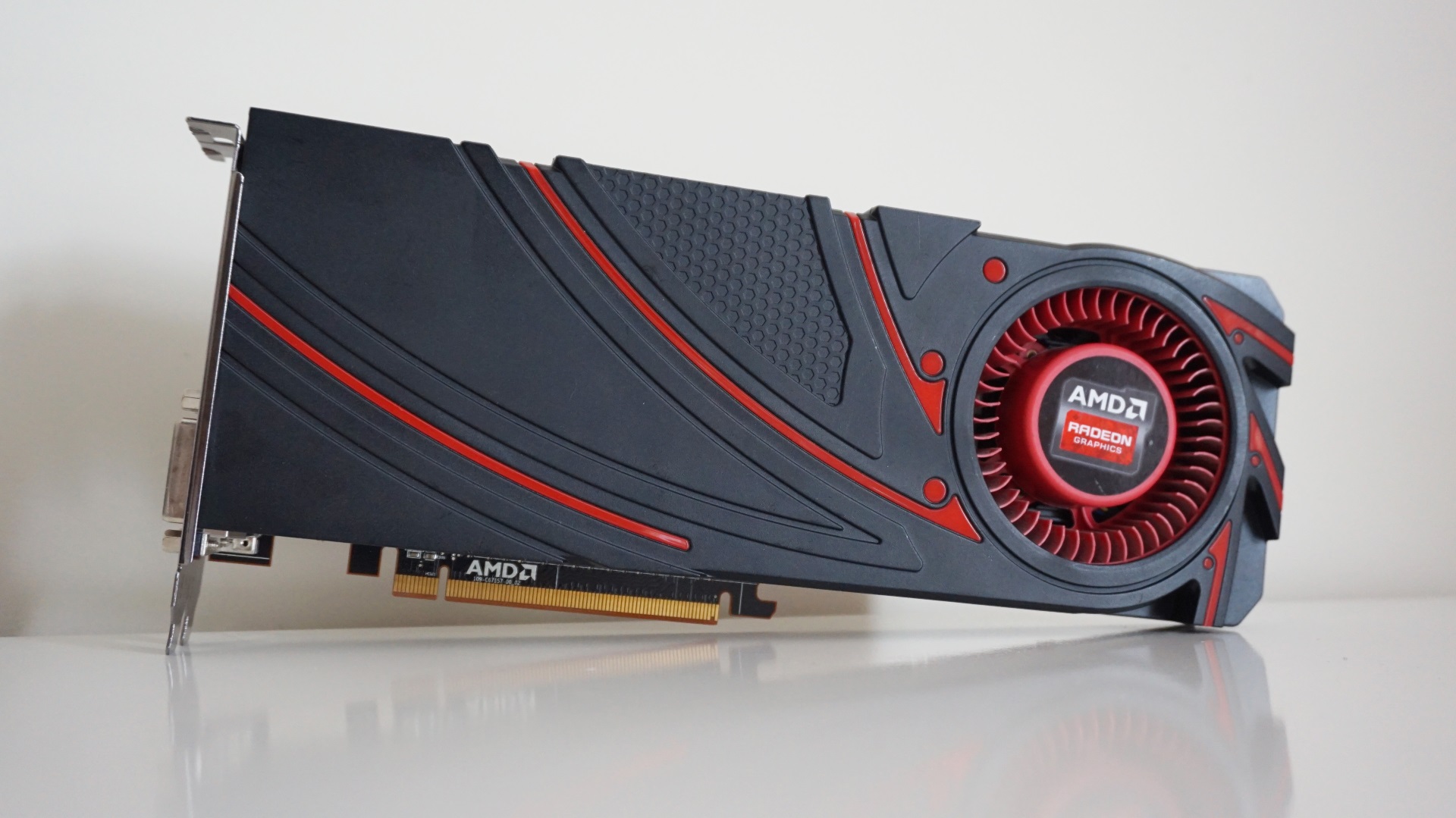
AMD Radeon R9 290
The R9 270 might have been too small to ride the Metro Exodus fun train, but fortunately, the R9 290 just about scrapes over the minimum height requirement if it stands on its tippiest tippy toes. With a much healthier 4GB of memory over the 270's 2GB, this ancient AMD is much better equipped to deal with 1080p resolutions than its decrepit sibling. Thank goodness for that.
Can I play this at 1920x1080?
The geiger counter says yes. While Low will yield the smoothest frames with an average of 80fps, you can probably get away with playing this on Medium to be honest, which averaged around 51fps. I still saw some juddery lows of 22fps here and there, admittedly, but even Low dropped as far as 35fps on occasion.
Can I play this at 2560x1440?
Surprisingly, yes, although only on Low if you have any sense. Here, you're looking at an average of a very decent 66fps (although you'll still see lows of 35fps here and there), whereas Medium will see that plummet all the way down to an average of 39fps and lows of 19fps, which is likely a step too far even for the most determined of R9 290 owners.
Can I play this at 4K?
Uh oh, the geiger counter's going wild again, STEP AWAY STEP AWAY TICK TICK TICK TICK TICK TICK MOVE ON THE NEXT PAGE TICK TICK TICK
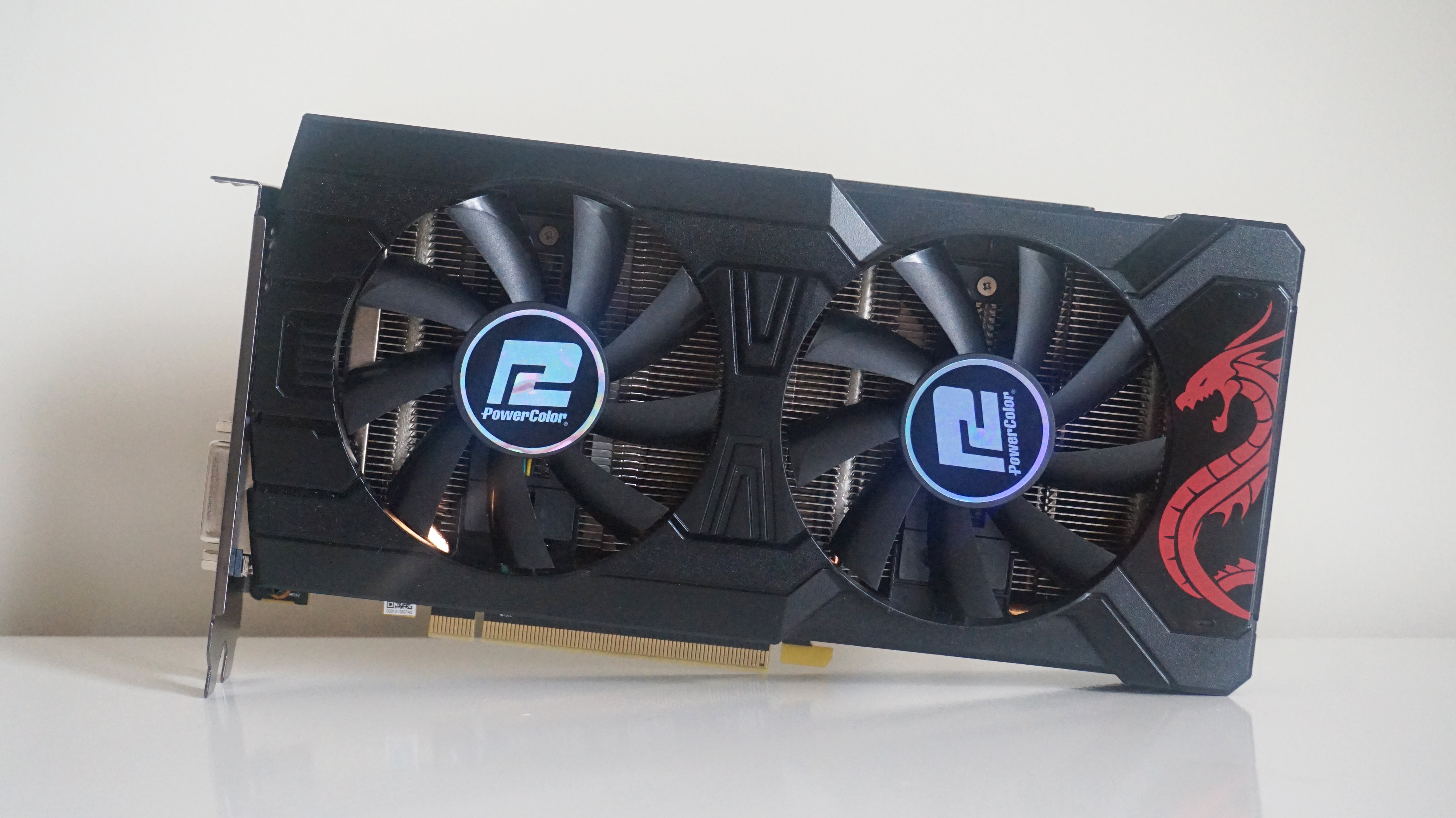
AMD Radeon RX 570
AMD's Radeon RX 570 is both faster and better value for money than either Nvidia's GTX 1650 and GTX 1050 Ti. That said, you'll probably still have to temper expectations with Metro Exodus, because holy moly is this a demanding game.
Still, you may well see slightly better results than what I've detailed below, as PowerColor’s Red Dragon version is one of the slower 8GB cards you can buy right now. With a boost clock speed of just 1250MHz, it’s quite a way behind the very top-end cards with boost clocks up in the mid 1300s. Still, as a baseline experience, there’s a lot to like here, so let’s get on down to some of those lovely frame rates.
Can I play this at 1920x1080?
Yes, but Medium is probably going to be your limit here, as even this only managed an average frame rate of 57fps in the game's benchmarking tool.
Can I play this at 2560x1440?
Also yes, but full-on Normal will likely be a bit too much for the RX 570, thanks to an average frame rate of just 42fps. Low, on the other hand, was practically twice as smooth, coming in at 82fps. As a result, I'd recommend switching off some of the effects like PhysX here, and maybe adjusting the shading rate slightly to find a happier medium. Or just stick to 1080p. Your choice.
Can I play this at 4K?
Alas, while Low will technically get you an average of 54fps here, it's hardly ideal. Stick to lower resolutions, folks, and enjoy (slightly) prettier graphics as a result.

AMD Radeon RX 580
Ordinarily, AMD's Radeon RX 580 would be more than enough for excellent 60fps play at 1920x1080, but Metro Exodus isn't any ordinary game. Indeed, with 4A Games recommending AMD's Radeon RX Vega 56 for 60fps at 1080p, RX 580 might well be quaking in their boots right now. But fear not, RX 580 owners, for all is not lost, as you can still get some lovely high speeds at 1080p and beyond.
This particular card is from PowerColor, and is the 8GB Red Dragon edition, which has a boost clock speed of up to 1380MHz. This makes it one of the faster RX 580s out there at the moment, but I'm confident the results below should still be broadly representative of what's possible on other 8GB RX 580s with slightly slower boost clock speeds.
Can I play this at 1920x1080?
Despite what 4A's recommended PC specs says for Metro Exodus, you absolutely can play this at 1080p on the RX 580. Perhaps not on High quality settings, as here I only got an average of 41fps with lows of 19fps, but Medium produces a more than agreeable average of 63fps with lows of just 33fps. Job done.
Can I play this at 2560x1440?
You sure can, but here you'll have to settle for Low and an average of 83fps if you want to be absolutely sure you'll avoid any big drops down to the mid 20s like you'll probably get on Medium. You could probably still opt for Medium in quieter scenes, as I still got a decent average of 47fps here, but with lows of 24fps, it's probably safer to stick with Low if you don't mind the compromise on graphical fidelity.
Can I play this at 4K?
Once again, Low is your best bet here, as here I saw an average of 52fps and lows of 31fps. On Medium, however, it all fell apart with an average of 27fps and lows of 15fps.

AMD Radeon RX 590
AMD’s Radeon RX 590 may not be widely available at the moment, but of the few models that do exist, PowerColor's Red Devil is more or less bang in the middle when it comes to base and boost clock speeds. This means that the results below should be pretty much representative of what you'll see on other RX 590s in Metro Exodus, which is good news if the results for the RX 580 and GTX 1060 weren't quite to your liking.
Can I play this at 1920x1080?
Absolutely, although you'll probably want to err on the side of caution here and stick with Medium and its average of 70fps rather than venture out into the chilly, juddery wasteland of High's 45fps average and lows of 22fps. Still, a bit of settings fiddling should be able to sort that out, so you can probably pick either of these and still have a decent enough time with it.
Can I play this at 2560x1440?
Yep, and Medium is once again your best option at this resolution, averaging 51fps with lows of 30fps. I mean, sure, you can whack it down to Low and get silly average of 92fps, but when you're playing a game this lovely, you owe it to yourself to try and get the best quality possible if you can help it. Any higher than Medium, however, and you're looking at a fair few drops below the sub-30fps mark.
Can I play this at 4K?
Sort of yes, if you don't mind playing on Low with a 61fps average (Medium will likely stop it dead in its tracks with its average of 30fps and lows of 20fps), but why would you want you can get almost equally good speeds at 1440p on Normal? After all, the RX 590 isn't really built for 4K, so I'd urge sticking with 1440p here to experience the game at its best.

AMD Radeon RX Vega 64
The Radeon RX Vega 64 has since been replaced by the Radeon 7 as AMD's top-end graphics card, but there's still plenty of power to be found here thanks to its 8GB of HBM2 memory and 4096 stream processors.
Admittedly, it would appear Sapphire's Nitro+ edition of the Vega 64 is actually out of stock at most retailers out there, but if you wondering what the best case scenario might be for potential Vega 64 owners, this is a good place to look. With a boost clock speed of up to 1611MHz, it's certainly one of the faster models that have been produced so far, so some results may vary depending on whether you've got a slightly slower Vega 64. Still, if you're looking to play Metro Exodus on the very top graphics settings, this is the kind of card you're going to need in order to do it.
Can I play this at 1920x1080?
You sure can, and you can even whack it up to Ultra for a smooth average of 58fps while you're at it, too.
Can I play this at 2560x1440?
Right this way, sir / madam. There's a range of setting you could potentially choose from here. Medium will get you the smoothest frame rates with an average of 76fps and lows of 40fps, but I'd be quite happy recommending High's average of 56fps. I still saw a couple of drops to 30fps, but nothing too major. You could probably even manage a bit of Ultra if you really wanted to, though, as this averaged 47fps and didn't really go much below 30fps again even during the toughest bits of the benchmark.
Can I play this at 4K?
Yes indeed, although you'd probably be wise to keep it on Low or Medium if you are going to play Metro Exodus at 4K, as High produced an average frame rate of just 35fps with lows of 22fps. Medium is still a fair jog away from achieving anywhere near a stable 60fps, averaging 46fps overall, but at least you're unlikely to see anything below 30fps in the process. Low, meanwhile, will get you silly numbers like an average of 92fps and lows of 60fps, but a bit of settings tweaking should be able to get a much better picture if full Medium proves a bit too juddery for you.

AMD Radeon RX 5700
Woah, it's here, AMD's brand new kid on the graphics card block. The Radeon RX 5700 is an absolutely stonking card for what it costs at the moment, beating the RTX 2060 in practically everything going while giving the more expensive RTX 2060 Super a run for its money as well. If you don't believe me, have a look at the big RTX 2060 vs RX 5700 comparison piece I did.
This particular edition is AMD's own reference version of the card, so the results below should probably be taken more as a baseline experience rather than an absolute best case scenario - especially once those third party models start arriving on shop shelves with their superior coolers and overclocked boost speeds. Still, as you'll see below, this is still an excellent card to be playing Metro Exodus with, even without all the fancy ray tracing gubbins.
Can I play this at 1920x1080?
Absolutely. Does an average of 61fps on Ultra sound agreeable to you? Thought so.
Can I play this at 2560x1440?
Indeed, my good sirs and madams. Best stick to High here, though, my friends, where you should see an average of 59fps. However, for those of a daring disposition, Ultra should be within reach as well thanks to an average of 49fps.
Can I play this at 4K?
What ho, by jolly they've only gone and done it - as long as doing it on Low at an average of 60fps doesn't upset your sense of decorum. After all, Medium and its average of 33fps is most likely a venture for mad fools only at this resolution, so if you're after the prettiest graphics possible, be a good sport and play at 1440p instead.
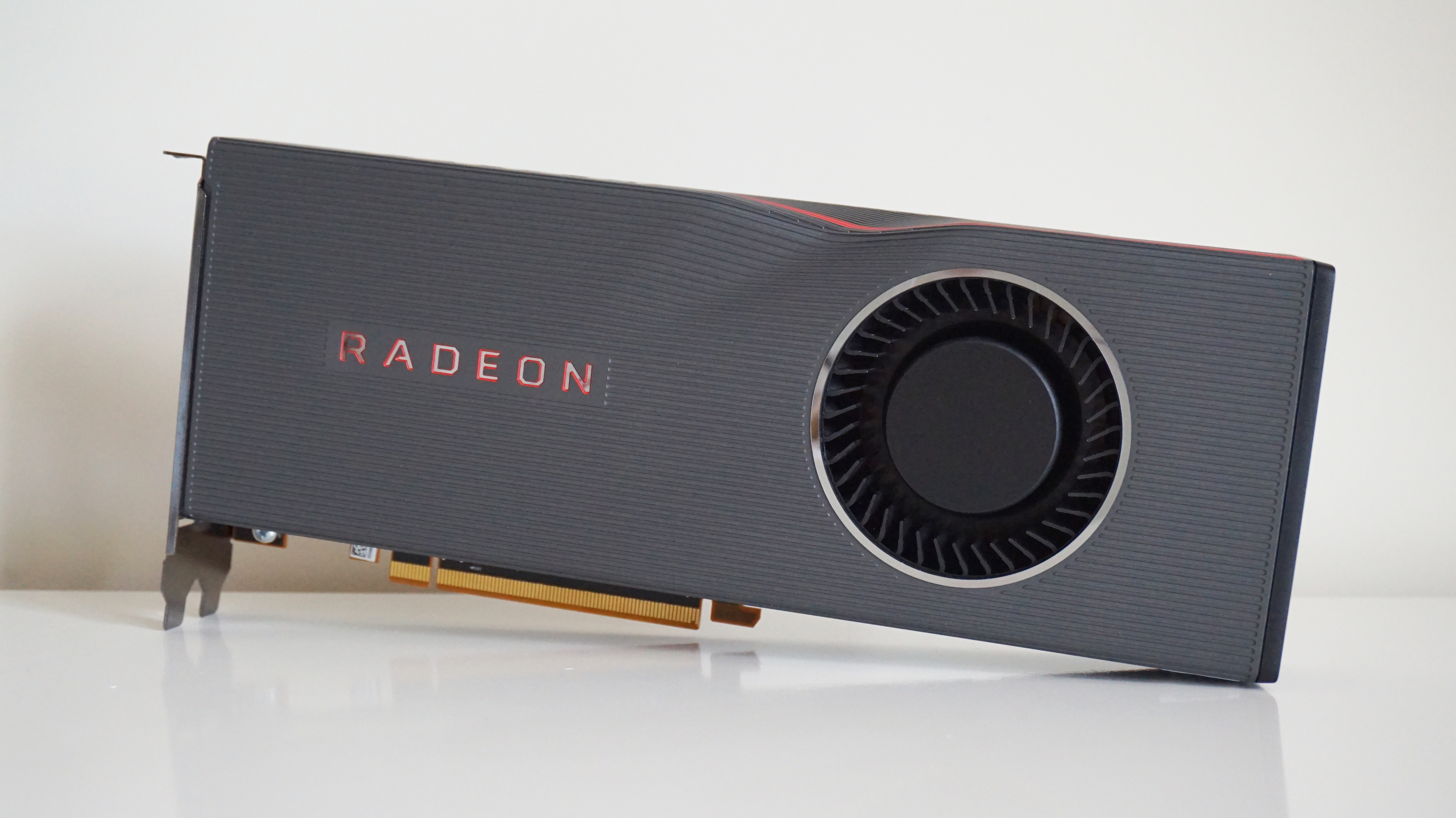
AMD Radeon RX 5700 XT
Ah, the slightly melty-looking AMD Radeon RX 5700 XT. I'll never not see that weird little dip as a kind of accidental thumb imprint from taking out of my PC while it was still a bit warm, but looks aside this is still one of the best GPUs you can buy today for flawless 1440p gaming.
Indeed, AMD's reference version of this particular card is about to be joined by a swathe of better cooled and even faster editions from third party manufacturers very soon, so those waiting to buy one of those will probably see even faster speeds than what I've detailed below.
Can I play this at 1920x1080?
You sure can, and you can even bag a nice average of 66fps on Ultra, too.
Can I play this at 2560x1440?
Indeed! You could probably take your pick between Ultra or High at this resolution, as Ultra will net you an average of 56fps, while High will push it up to 66fps.
Can I play this at 4K?
Err, yes, but only sort of. Like the regular RX 5700, the XT will deliver the smoothest speed on Low, averaging 60fps, but why settle for that when you can enjoy much prettier graphics at 1440?
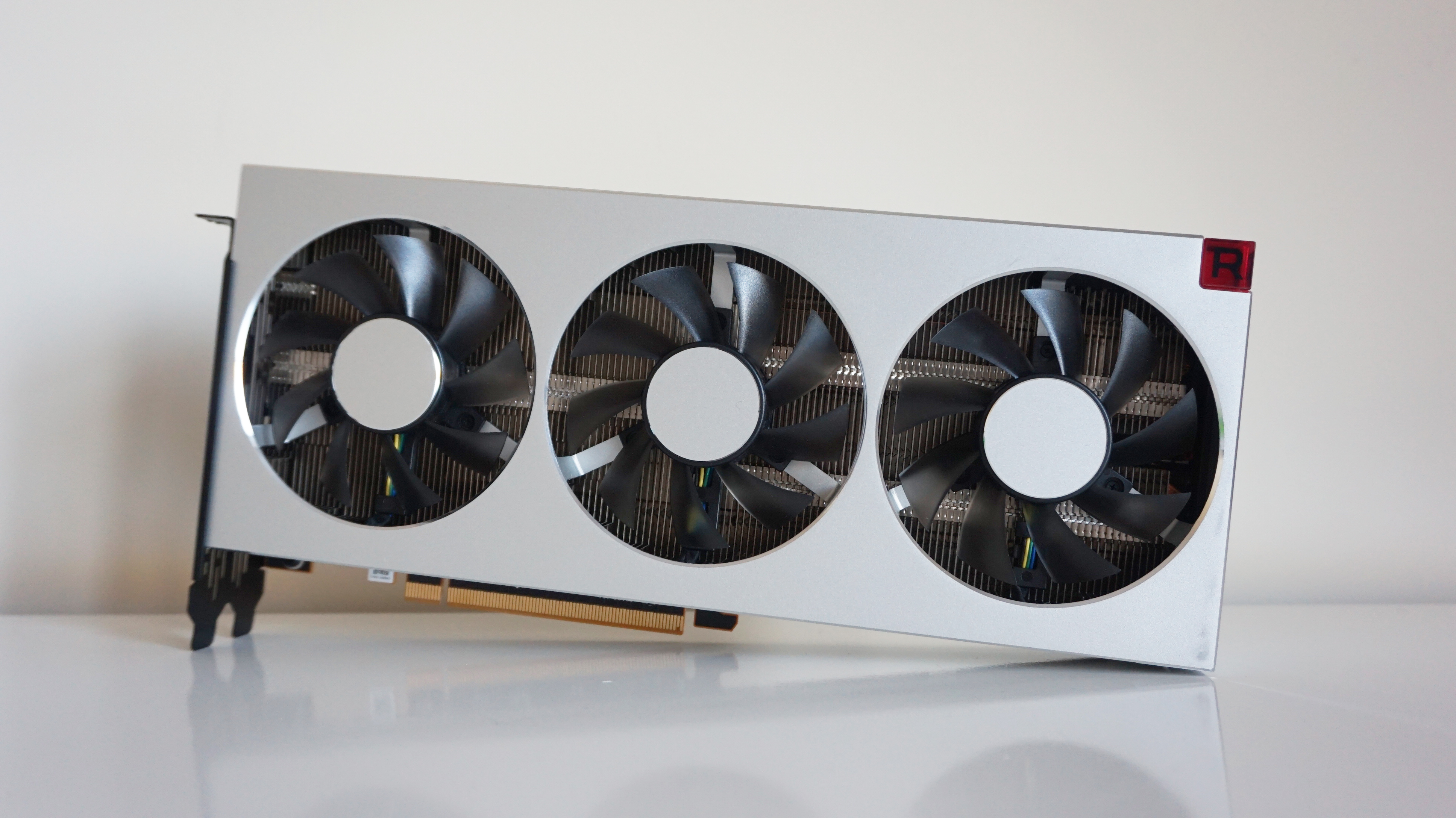
AMD Radeon 7
Ah, the Radeon 7, AMD's answer to the Nvidia GeForce RTX 2080 albeit without any of that ray tracing and DLSS lark. That rather puts the Radeon 7 on the back foot a bit here, at least if you're comparing each card's Metro Exodus performance side by side, but that doesn't mean you can't still get some great speeds over in camp AMD. Indeed, with its massive 16GB of HBM2 memory, the Radeon 7 is perfectly capable of hitting 60fps on almost every resolution going here, which is all anyone can really ask for here.
I've got AMD's version of the card on test here, but when all the other third party cards have exactly the same base and boost clock speeds as this one (if you can even find one to buy, that is), the results below should be more or less identical across the board.
Can I play this at 1920x1080?
Absolutely, and if an average of 67fps on Ultra isn't good enough for you, I don't know what is.
Can I play this at 2560x1440?
Do you have thumbs? Of course you can! Bung it on High for a sweet average of 66fps, but you might as well kick it up to Ultra if you want the prettiest polygons, as this still averaged a very agreeable 55fps.
Can I play this at 4K?
Can do, captain, although Medium is probably the safest option for the best speeds. Here, I got an average of 54fps with lows of 33fps, while High settled around the 43fps mark but occasionally dipped down to 28fps.



